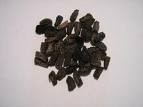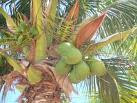When you think “cucumber” you probably think of the long green one that we know in Europe, the one that is grown in greenhouses, but in Pakistan there are different varieties of cucumber, the desi kheera, which is a relatively small, thick yellow cucumber and small green cucumbers which are kheera and look like mini-cucumbers. The seeds and leaves are used for medicinal purposes to cure a variety of ills including jaundice, sore throats general weakness and insomnia, to name but a few uses.
Cucumbers originated in the Indian subcontinent, and are known to have been cultivated in Western Asia for at least 3,000 years. They were probably introduced into Europe by the Romans and were cultivated in France in the 9th century, in England in the 14th (although they had been introduced earlier, but had disappeared, it would seem in the Dark Ages after the fall of the Roman Empire) and were grown in North America by the mid-16th century. Christopher Columbus apparently took cucumber seeds with him to Haiti in 1494.They are mentioned in the Epic of Gilgamesh as being eaten in the ancient city of Ur, and were cultivated in ancient Thrace which is now parts of Bulgaria and Turkey. The cucumber is part of traditional Greek and Bulgarian and Turkish cuisine, used in desserts and yoghurt-based soups. It is also used in raita in the subcontinent and tzatziki in Greece.
 The Emperor Tiberius insisted on having cucumbers on his table every day in winter and summer and so they were cultivated for him in the first “greenhouses” protected from the cold by frames of oiled cloth at night and taken into direct sunlight on warm winter days. Roman matrons who were barren would wear cucumbers around their waists believing that they would make them fertile. In Roman times they were also carried to births by midwives and thrown away after the baby was born. Clearly this had something to do with the phallic appearance of the cucumber.
The Emperor Tiberius insisted on having cucumbers on his table every day in winter and summer and so they were cultivated for him in the first “greenhouses” protected from the cold by frames of oiled cloth at night and taken into direct sunlight on warm winter days. Roman matrons who were barren would wear cucumbers around their waists believing that they would make them fertile. In Roman times they were also carried to births by midwives and thrown away after the baby was born. Clearly this had something to do with the phallic appearance of the cucumber. In English we have the phrase “cool as a cucumber” which comes from a poem “A New Song” by John Gay and English poet and dramatist of the early 18th century. Cucumbers are used for their cooling properties in medicine and can be placed on sunburn to relieve the pain and calm the skin’s redness. They are useful to get rid of puffiness around the eyes- just put a slice on each eye and leave it there for 15 minutes to half an hour while you lie back and relax. This is also a remedy for tired eyes. The cucumber cools the eyes and skin and rehydrates it. Try pulping a cucumber and applying the pulp to your face. It will leave your skin feeling rejuvenated and glowing with health. The pulp can also be applied to burns and scalds and applied to sunburn to reduce the heat.
 Cucumbers are members of the Cucurbitaceae family of plants which include the watermelon, pumpkin, courgettes and gourds such as the ash gourd or petha. Although the English cucumber is sold as seedless it still has a few seeds, and these are considered very beneficial in Ayurvedic medicine and other traditional medicinal practices in the Indian subcontinent.
Cucumbers are members of the Cucurbitaceae family of plants which include the watermelon, pumpkin, courgettes and gourds such as the ash gourd or petha. Although the English cucumber is sold as seedless it still has a few seeds, and these are considered very beneficial in Ayurvedic medicine and other traditional medicinal practices in the Indian subcontinent. Cucumbers contain a lot of water, of course, so are good in warm weather, and cucumber juice is full of nutrients and very refreshing. They contain vitamins A, C, E and some of the B-complex ones as well as minerals such as potassium, iron, manganese, magnesium, molybdenum, phosphorous, calcium, copper, sodium and zinc. They also contain silica which the body needs to strengthen the connective tissues, the muscles, cartilage, tendons and ligaments. Amino acids including arginine are present, and arginine is especially beneficial for the immune system and the heart and circulation. Arginine also boosts nitric oxide in the body which relaxes blood vessels and has the same basic effect as Viagra, so eating cucumbers with the peel on them, can help with erectile dysfunctions. The skin of the cucumber contains silica, potassium, manganese and fibre, so should be eaten and not discarded. The ascorbic acid and caffeic acid contained in cucumbers means that they are good for preventing water retention, and are used for their diuretic properties here in Pakistan. They are also used in the Ayurvedic system of medicine to dispel kidney stones and to stop haemorrhages.
 |
| Desi Kheera |
In Pakistan the traditional healers or hakims use the cucumber seeds as coolants in fevers, for their diuretic properties and because they are highly nutritious for general weakness. The leaves are boiled and mixed with cumin seeds then mashed to a pulp and given to relieve throat infections. They may also be dried and powdered, then mixed with gur and given to stop water retention. For sunstroke pieces of cucumber are placed on the head so that the sufferer will breathe moistened air to neutralize the body heat. Pulped cucumbers with seeds are made into a paste to relieve burns and headaches and for skin problems. It is also believed that cucumbers cure insomnia, although I haven’t worked out how. Another recipe is for 1 oz of cucumber seeds and the same of yellow melon seeds, watermelon seeds and raisins (probably sultanas though I think) 2 oz chicory 10 ounces of gur or jaggery and a litre of water. The seeds are boiled then strained and the liquid drunk in ½ -1 oz doses three or four times a day for water retention and to cool the body during fevers.
To cool down during summer, try this Turkish recipe for cucumber and yoghurt soup or our raita or tzatziki recipes.
Ingredients
1 large pot natural yoghurt
1 lb cucumbers, grated
2 tbsps fresh dill, snipped into ½ inch pieces
2 tsps distilled white vinegar
1 tbsp olive oil
3 cloves garlic, finely chopped
freshly ground black pepper
1 tbsp fresh mint, snipped into small pieces
mint sprigs to decorate each bowl of soup
Method
Put all the ingredients except for the mint in a bowl and whisk so that they are all thoroughly combined.
Chill for at least an hour.
When ready to serve you may have to whisk the soup again as you need to add the freshly snipped mint.
Pour into bowls and garnish with a sprig of fresh mint.
This has Taste and is a Treat.












































